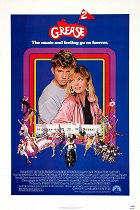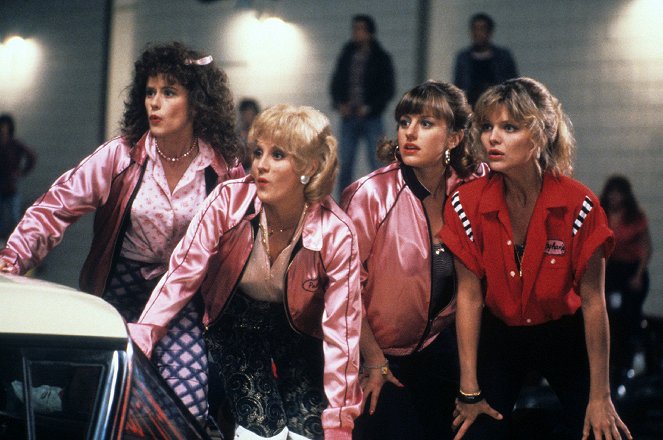Directed by:
Patricia BirchScreenplay:
Ken FinklemanCinematography:
Frank StanleyCast:
Maxwell Caulfield, Michelle Pfeiffer, Maureen Teefy, Pamela Adlon, Didi Conn, Adrian Zmed, Christopher McDonald, Eve Arden, Sid Caesar, Tab Hunter (more)VOD (3)
Plots(1)
Return to rockin' Rydell High for a whole new term! It's 1961, two years after the original Grease gang graduated, and there's a new crop of seniors - and new members of the coolest cliques on campus, the Pink Ladies and T-Birds. Michael Carrington is the new kid in school, but he's been branded a brainiac. Can he fix up an old motorcycle, don a leather jacket, avoid a rumble with the leader of the T-Birds, and win the heart of Pink Lady Stephanie Zinone? He's surely going to try! (Paramount Home Entertainment)
(more)Reviews (1)
Grease, set in 1958, is one of the most overrated films ever, so I'm not surprised that this 1961 sequel (with a touch of 1982) is doing so "poorly." It's crap, but plenty of other sequels offend me more. It still has a bit of charm here and there, but not enough for a guilty pleasure. And Michelle Pfeiffer? She needed her first blockbuster, so there's nothing to worry about regarding her. This film took her away from the TV and that was the purpose, followed by De Palma. Personally, I was honestly surprised by the number of people involved in both films. Frenchy - Didi Conn was familiar to me at first glance, but after that I had to look for names: Principal McGee - Eve Arden, Blanche Hotel - Dody Goodman, Coach Calhoun - Sid Caesar, Mr. Rudie / Mr. Spears - Dick Patterson, Eugene Felnic - Eddie Deezen, Leo, Scorpions member / Balmundo - Dennis Stewart, dancers - Helena Andreyko, Sandra Gray, Dennis Daniels, John Robert Garrett, Andy Tennant. Greg Rosatti went from dancer behind the camera to choreographer, while producer Allan Carr, Neil A. Machlis and Robert Stigwood, editor John F. Burnett, and production manager Neil A. Machlis all stayed on. Sean Hanley moved from one sound job to another, June Edgerton again contributed to the music, Michael Gibson and Bill Oakes moved from the music department to the production department, Louis St. Louis became the main composer after a previous collaboration, Patricia Birch remained as choreographer, and the look of the credits in both cases was the work of Wayne Fitzgerald.
()

